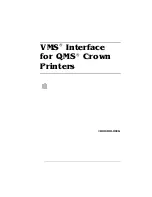
Waves LinMB software guide
page 7 of 28
Chapter 3 – Specialties of the Chef
A
DAPTIVE
T
HRESHOLDS AND
D
E
-
MASKING
.
The effect of louder sounds on softer sounds has been researched for
decades. There are many classifications to masking and the most effective
masking is considered forward in time and upward in frequency. Simply put
loud lower frequencies affect the way we perceive higher softer frequencies.
The loud low frequency masks the higher frequencies. In the LinMB we can
consider each band to be the masker for the band above it, so when the
sound in a certain band is very loud it will have some masking effect to the
sound in the band above it. To address this we can introduce a little lift to the
threshold of the masked band and as result it will get less attenuation and be
a little louder or de-masked.
The Linear Phase MultiBand processor lets each band be sensitive to the
energy in the band below it. The “Adaptive” control is a continuous scale of
sensitivity to the Masker scaled in dB’s. –inf. Adaptive = off, this means no
sensitivity and the threshold is absolute regardless of what’s happening in the
lower band. When increasing the value the band will become more and more
sensitive to the energy in the band below it, The energy ranges from –80dB tp
+12. We call 0.0dB Fully Adaptive and values above it are Hyper Adaptive.
When the energy in the Masker band is high the threshold will be lifted. When
the energy in the lower band falls, the detail is revealed, threshold goes back
down and the attenuation goes back to normal. Also there is a chain reaction
that makes for subtle general looseness of compression to the higher bands
whenever the low bands are with high energy.
Each band of the linear MultiBand has its own compression settings and the
engineer may want to compress more when a band is exposed and less when
its masked. In example a song starts with a solo vocal and then the Playback
comes in and the picture changes. The “presence” frequencies of the voice
become more significant then the lower “Warm” tones of the voice, so to
regain warmth we would want to attenuate it less when the playback kicks in.
This is a macro example that can easily be treated with a bit of automation but
in concept masking happens on the micro scale throughout the program. For
example a staccato bass line masks and exposes the higher band’s sound on
a scale where manual riding isn’t practical. The adaptive behavior is the
practical answer.
The Adaptive De-Masking behavior is new to almost all users, and some may
think it’s unnecessary. It is however interesting, effective and worth a try.
Others may find it useful but it may also call for some practice before you get
comfortable with it. Optionally, it may change they way you work.
As a first step, try to add adaptive behavior to ready made settings on material
that you know very well. Set the Adaptive control to –0dB at this setting you
will get very adaptive behavior. Do a bit of an A > B listening test. Try to pay
special attention to passages that have different spectral dynamic nature and








































